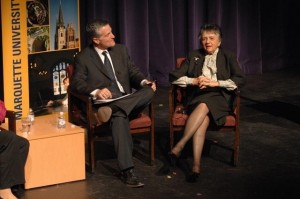Is There a Female Bloc on the U.S. Supreme Court?
For several decades commentators have referred to the United States Supreme Court as being divided into liberal and conservative blocs. Now, suddenly, it looks like there may be male and female blocs as well.
(Since a “bloc” normally has to have at least three members, the possibility of a female bloc came into existence only with the 2010 appointment of Justice Elena Kagan.)
In the Court’s recent decision in Blueford v. Arkansas, the court decided by a vote of 6-3 that the Constitution’s Double Jeopardy Clause did not prevent the State of Arkansas from retrying the petitioner Bluefield on capital murder charges.
Blueford was accused of killing his girlfriend’s young child and was indicted for capital murder. During his trial, the Arkansas jury was instructed to consider also the lesser included offenses of first-degree murder, manslaughter, and negligent homicide. Ultimately, the jury was unable to reach a verdict and it reported to the trial judge that it was deadlocked on the manslaughter charge. The jurors also stated that they had voted unanimously against Blueford’s guilt for the capital murder and first-degree murder charges and did not vote on negligent homicide.
In response, the trial judge declared a mistrial. When the state chose to retry Blueford, his lawyers moved to dismiss the capital and first-degree murder charges, based on double jeopardy considerations. The trial judge denied the motion, and the Arkansas Supreme Court agreed that double jeopardy had not attached.
Having granted cert., the United States Supreme Court affirmed the decision of the Arkansas Supreme Court. By a vote of 6-3, the court held that double jeopardy does not bar retrying Petitioner for capital and first-degree murder since the jury had not made a final resolution of the charges in the initial trial. Chief Justice John Roberts delivered the opinion, joined by male Justices Scalia, Kennedy, Thomas, Breyer, and Alito. Female Justice Sotomayor filed a dissent, joined by Justices Ginsburg and Kagan.
Whether or not gender played a role in the 6-3 split is an interesting question, but has not yet been addressed by commentators. Of course, one case does not establish a pattern, but it will be interesting to see if the pattern in Blueford v. Arkansas repeats itself.


 After a delegation of members of the Turkish Parliament
After a delegation of members of the Turkish Parliament